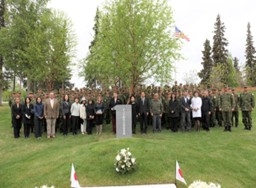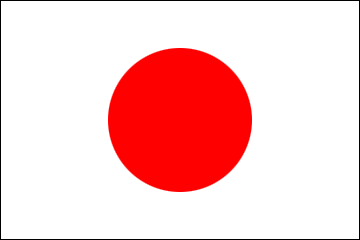World War II History and Legacy
2025/7/2
Battle of Attu
 Photo credit: Ministry of Health, Labour and Welfare
Photo credit: Ministry of Health, Labour and Welfare
In June 1942, during World War II, the Japanese military occupied Attu Island in the Aleutian Islands of Alaska, USA, and deployed a garrison of 2,600 troops. In response, starting on May 12, 1943, the U.S. military launched an operation to retake Attu Island, deploying approximately 11,000 troops—about five times the number of Japanese forces. A fierce 17-day battle ensued, causing significant casualties to the U.S. military. However, on May 29 of the same year, the Japanese forces were ultimately defeated in a final, desperate charge.
Establishment of the Japanese War Dead Memorial Cenotaph
 Wooden Cenotaph
Wooden Cenotaph
 Stone Cenotaph
Stone Cenotaph
After the end of World War II, with the goodwill of the U.S. government, the remains of 235 of the approximately 2,600 Japanese soldiers who died in the Battle of Attu were buried at Fort Richardson National Cemetery. In July 1953, these remains were repatriated to Japan.
In May 1981, Japanese residents living in Alaska voluntarily erected a wooden memorial cenotaph to honor these 235 fallen soldiers. Due to aging and deterioration, the wooden cenotaph was replaced with a new wooden one in September 2002.
In 2018, the 75th anniversary of the Battle of Attu, momentum grew to replace the wooden cenotaph with a stone one. In June of the same year, a founding committee was established for the project. With the support of the Attu Island Bereaved Families Association (led by Mr. Motoaki Asano), Japanese residents in Alaska, Japanese companies, and other supporters, a new stone cenotaph—crafted in Japan—was delivered to Fort Richardson National Cemetery at the end of April 2019. The replacement was realized in the commemorative year of Reiwa 1 (2019).
In May 1981, Japanese residents living in Alaska voluntarily erected a wooden memorial cenotaph to honor these 235 fallen soldiers. Due to aging and deterioration, the wooden cenotaph was replaced with a new wooden one in September 2002.
In 2018, the 75th anniversary of the Battle of Attu, momentum grew to replace the wooden cenotaph with a stone one. In June of the same year, a founding committee was established for the project. With the support of the Attu Island Bereaved Families Association (led by Mr. Motoaki Asano), Japanese residents in Alaska, Japanese companies, and other supporters, a new stone cenotaph—crafted in Japan—was delivered to Fort Richardson National Cemetery at the end of April 2019. The replacement was realized in the commemorative year of Reiwa 1 (2019).
Project for the Recovery of War Dead Remains
The last recovery of remains from Attu Island took place in 1953, when approximately 320 sets of remains were collected. Since then, many remains of fallen Japanese soldiers still remain unrecovered on the island.
There are several reasons why the recovery efforts have been difficult:
Two locations were identified for trial excavation, based on historical records indicating burial sites of Japanese soldiers. From one of these locations, an estimated two sets of remains and personal belongings were recovered. DNA analysis of the remains is currently underway.
There are several reasons why the recovery efforts have been difficult:
- Remote and Restricted Location:
Attu Island is an uninhabited island located about 2,400 kilometers from the center of Alaska. It is now designated as part of the Alaska Maritime National Wildlife Refuge, making access extremely limited. Excavation is restricted, and infrastructure must be specially arranged to support such operations. - Severe Weather Conditions:
The island is often covered in thick fog and snow, allowing only a short window during the summer months (typically July and August) for full-scale investigations and recovery activities.
Two locations were identified for trial excavation, based on historical records indicating burial sites of Japanese soldiers. From one of these locations, an estimated two sets of remains and personal belongings were recovered. DNA analysis of the remains is currently underway.

